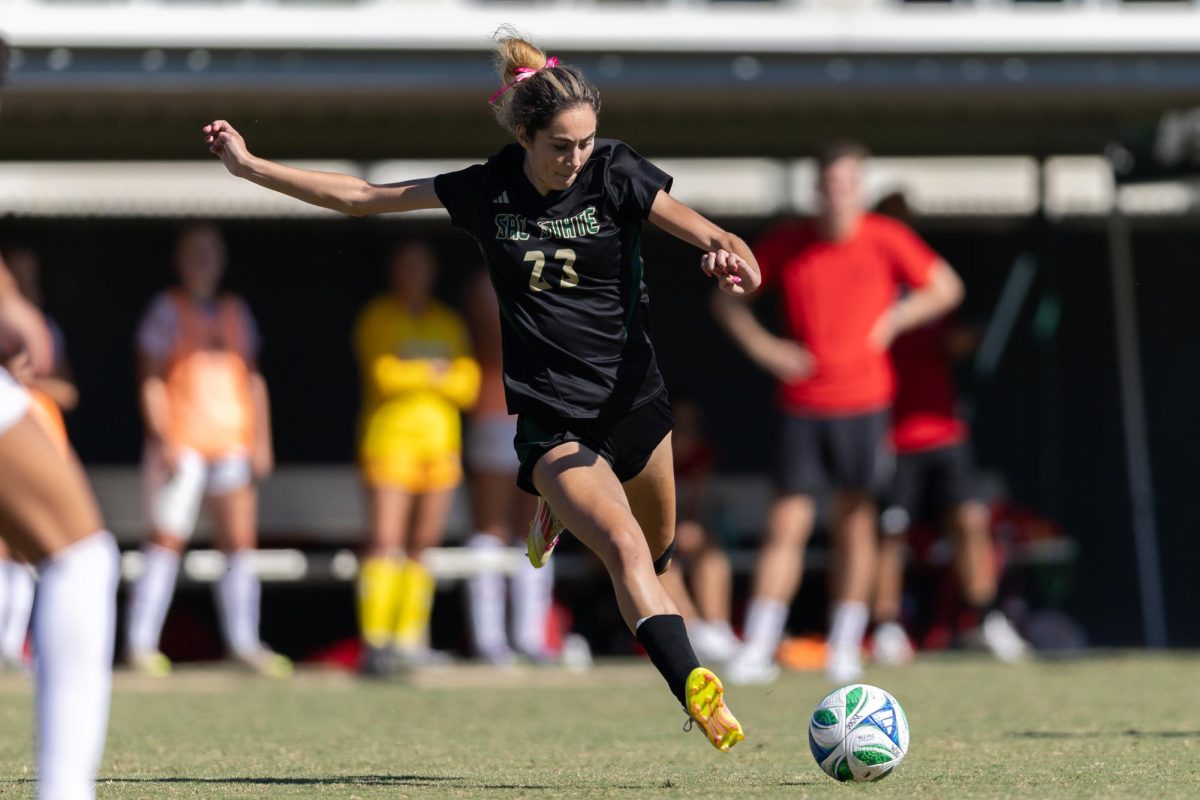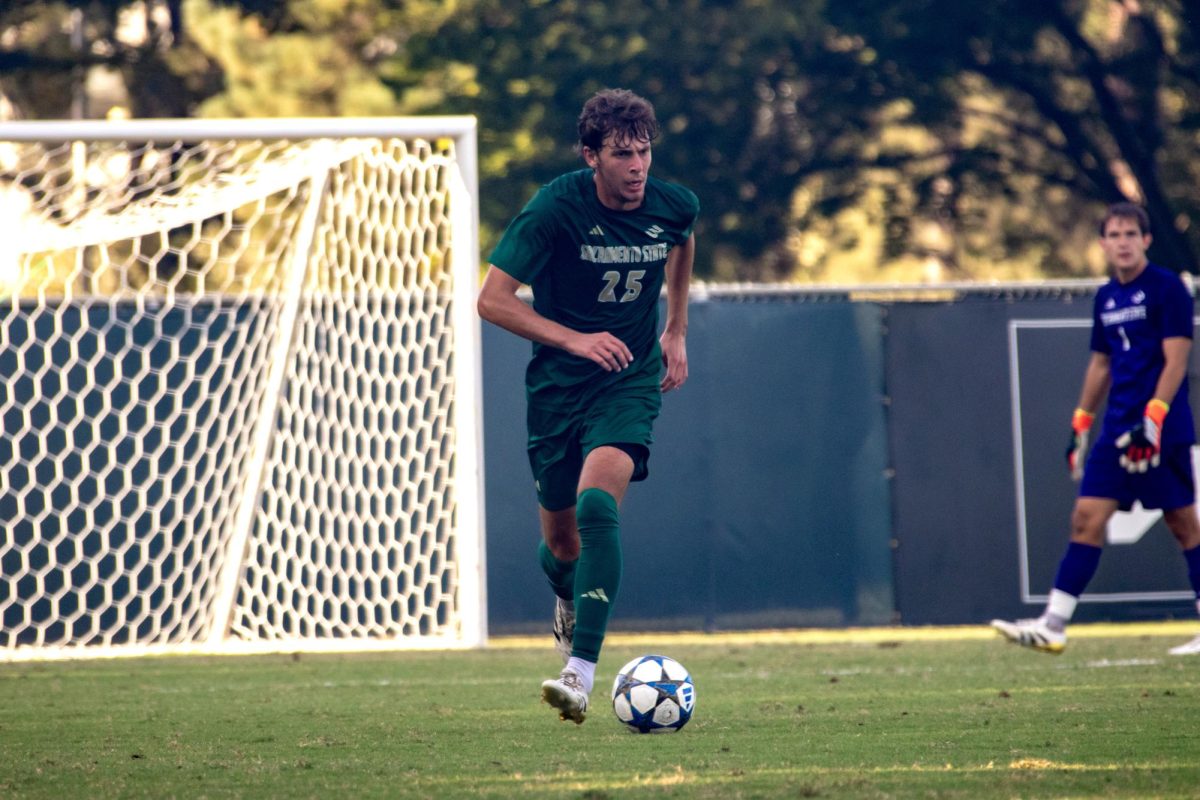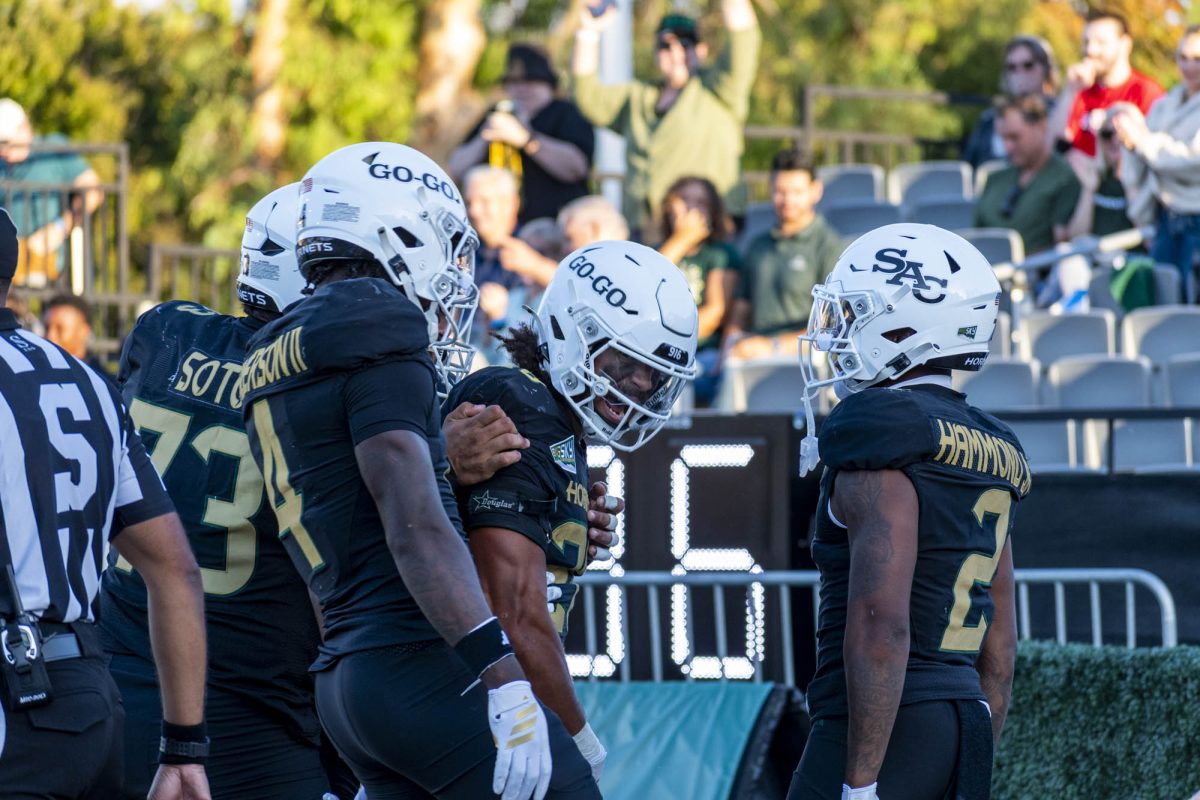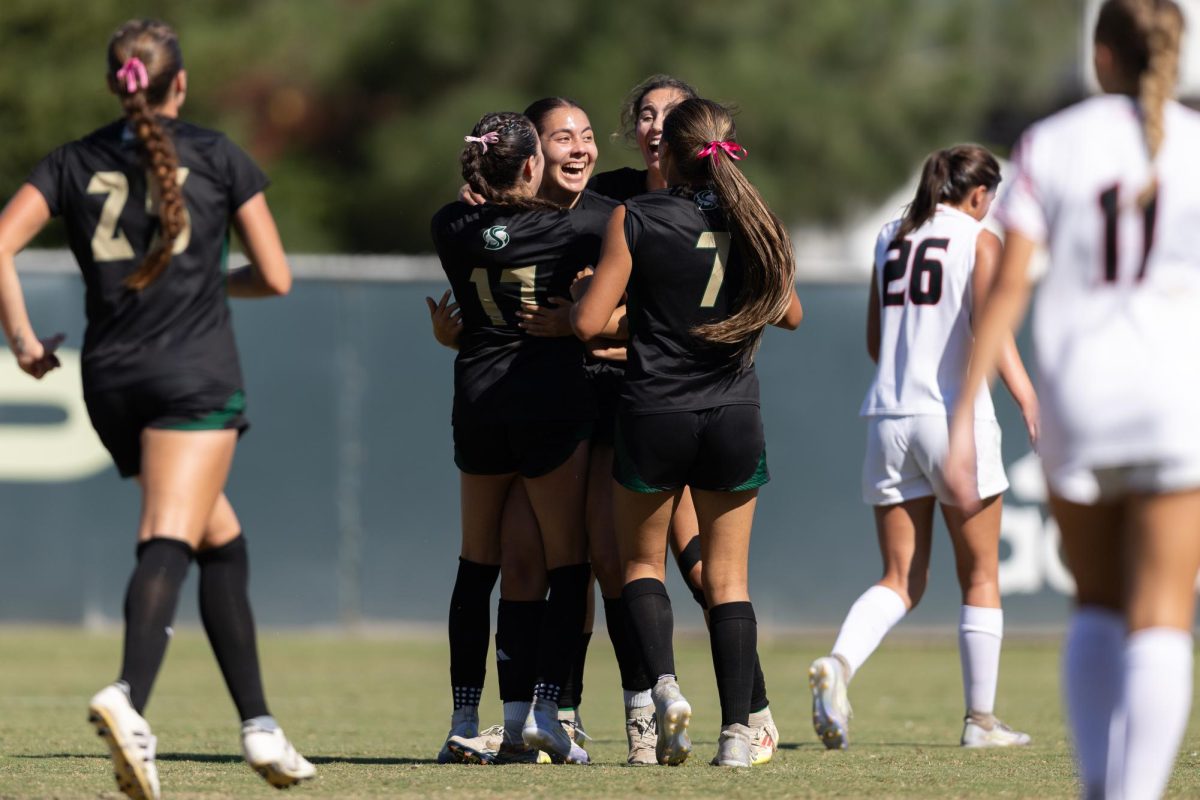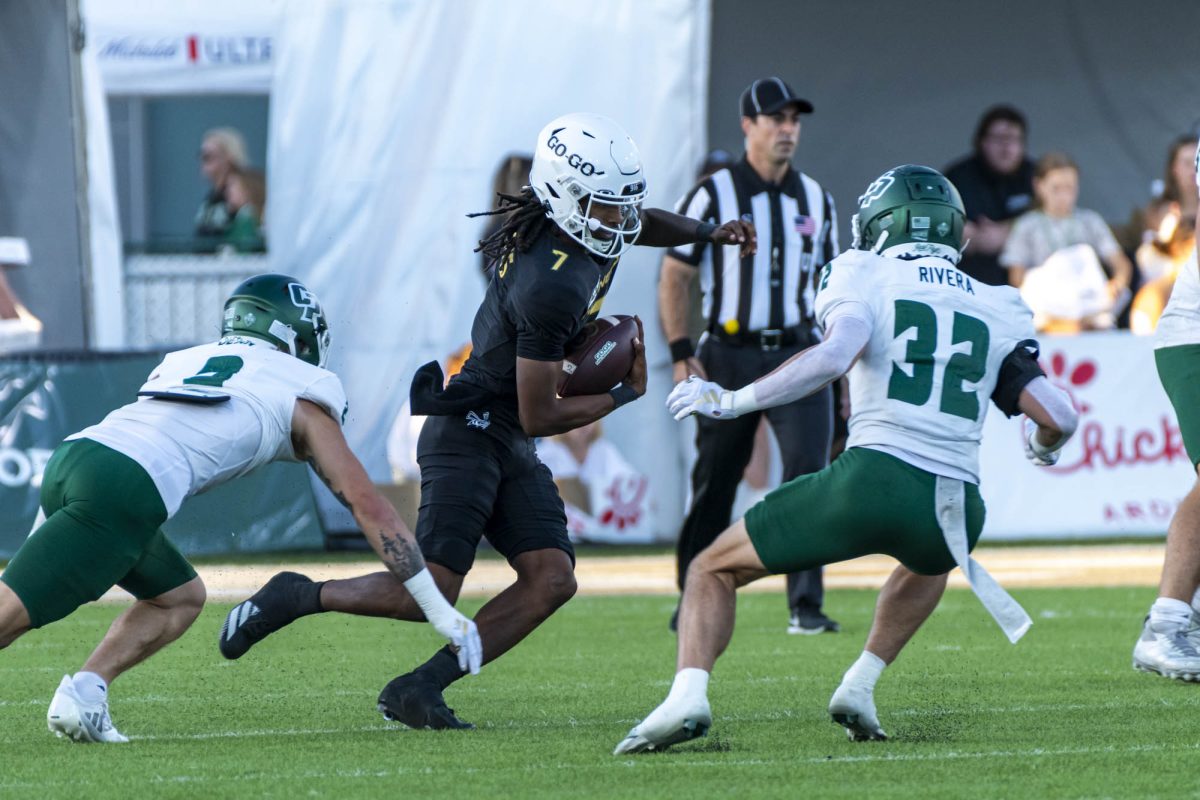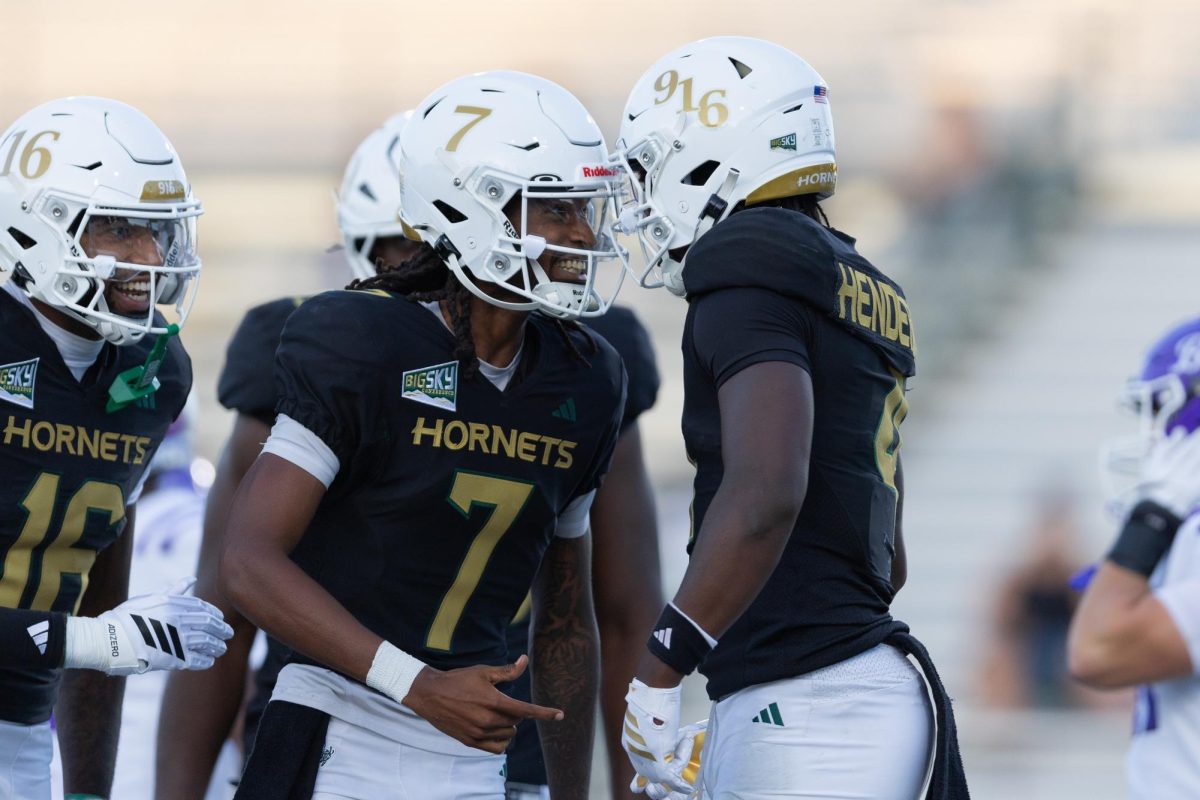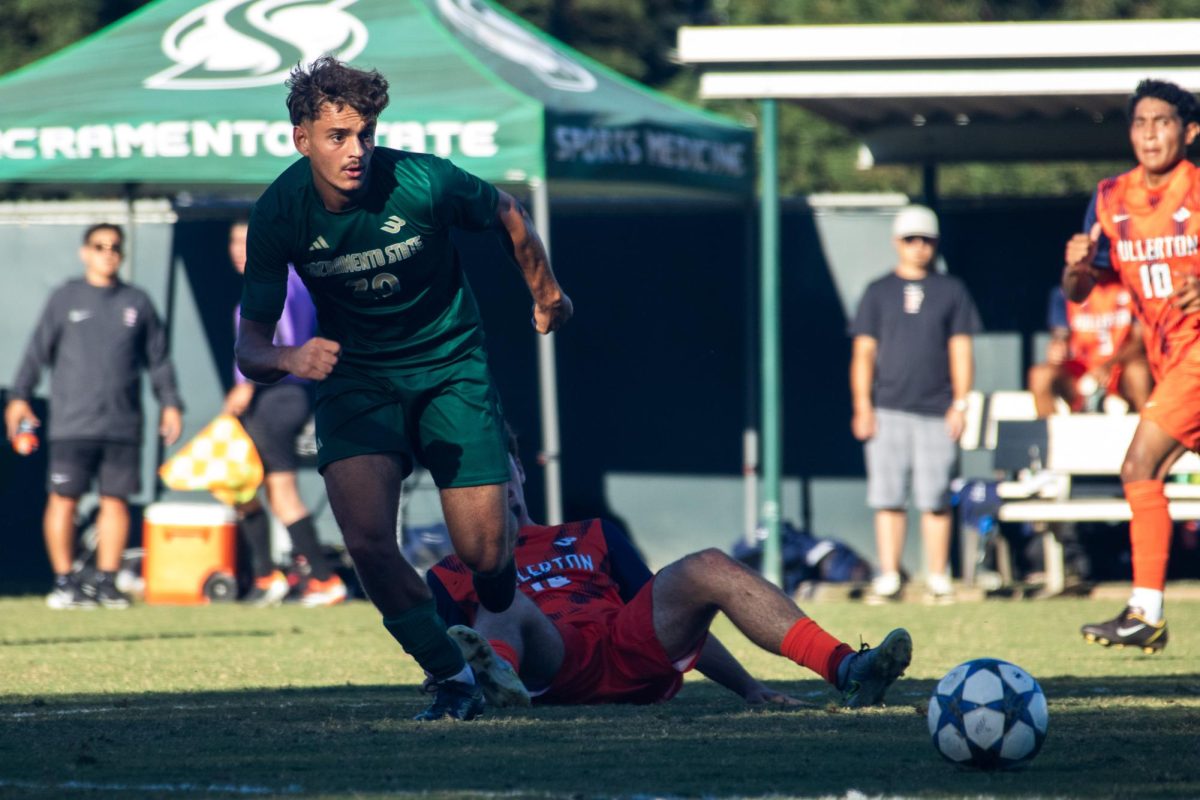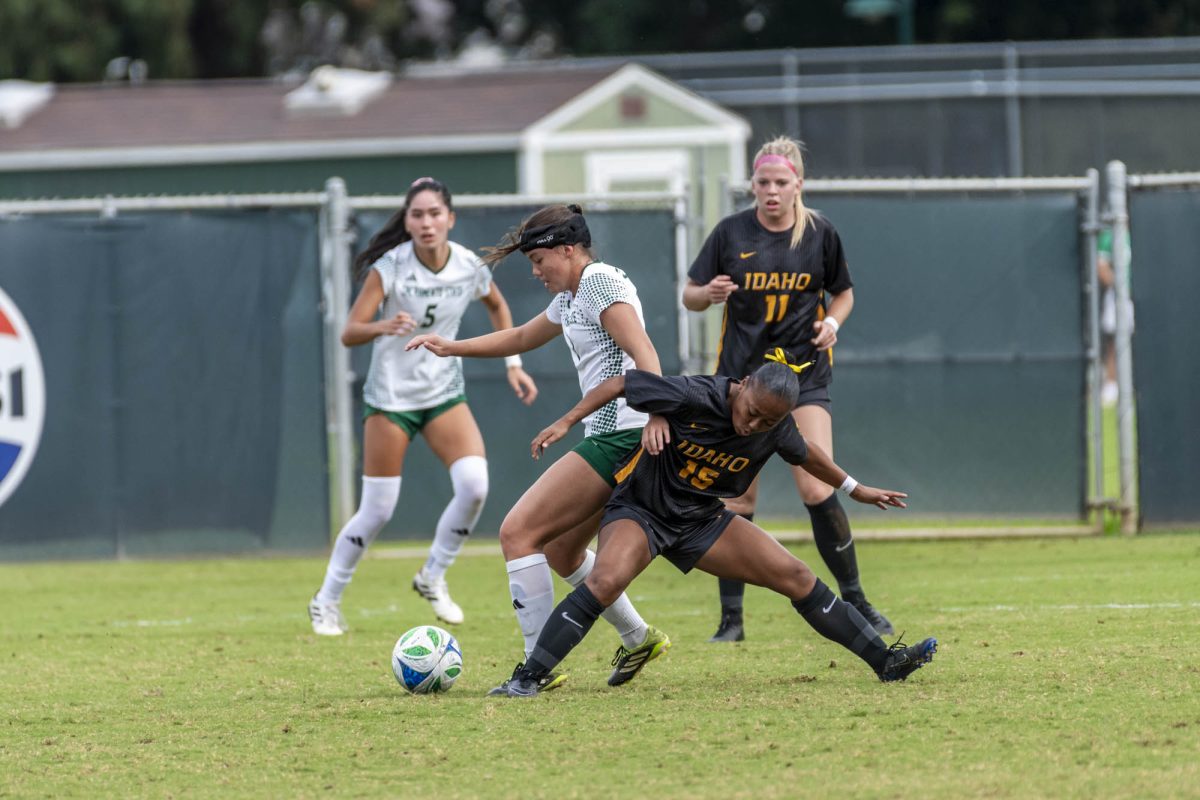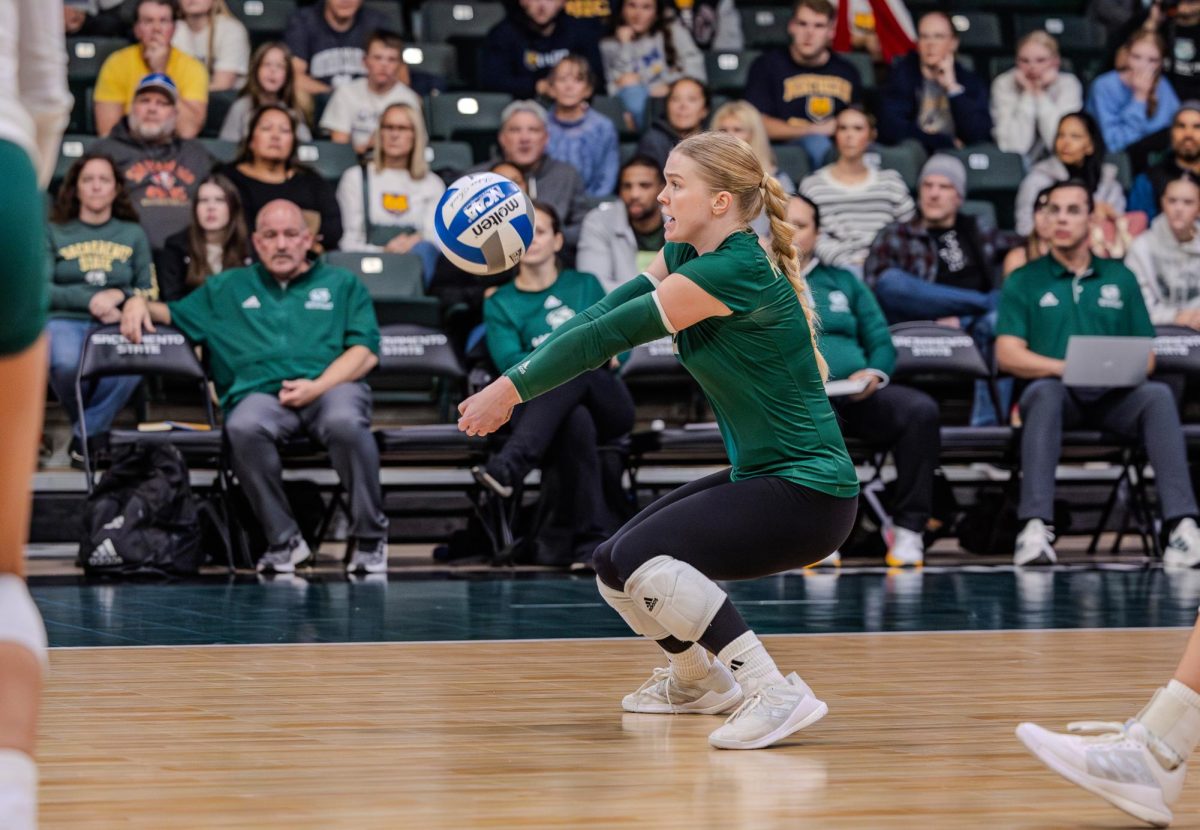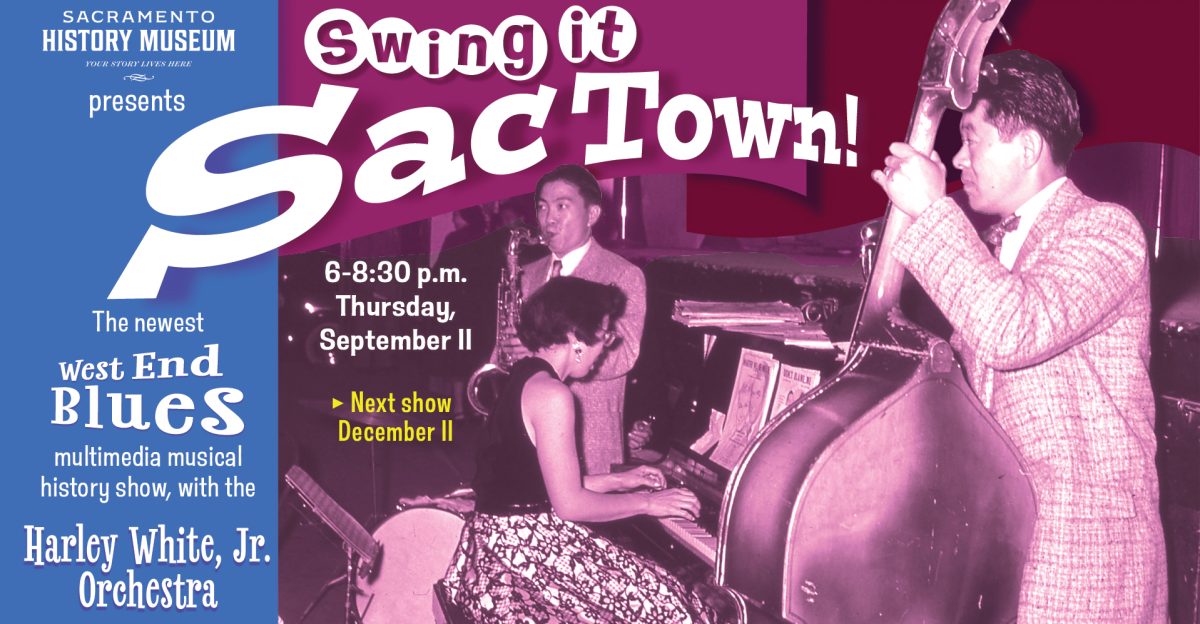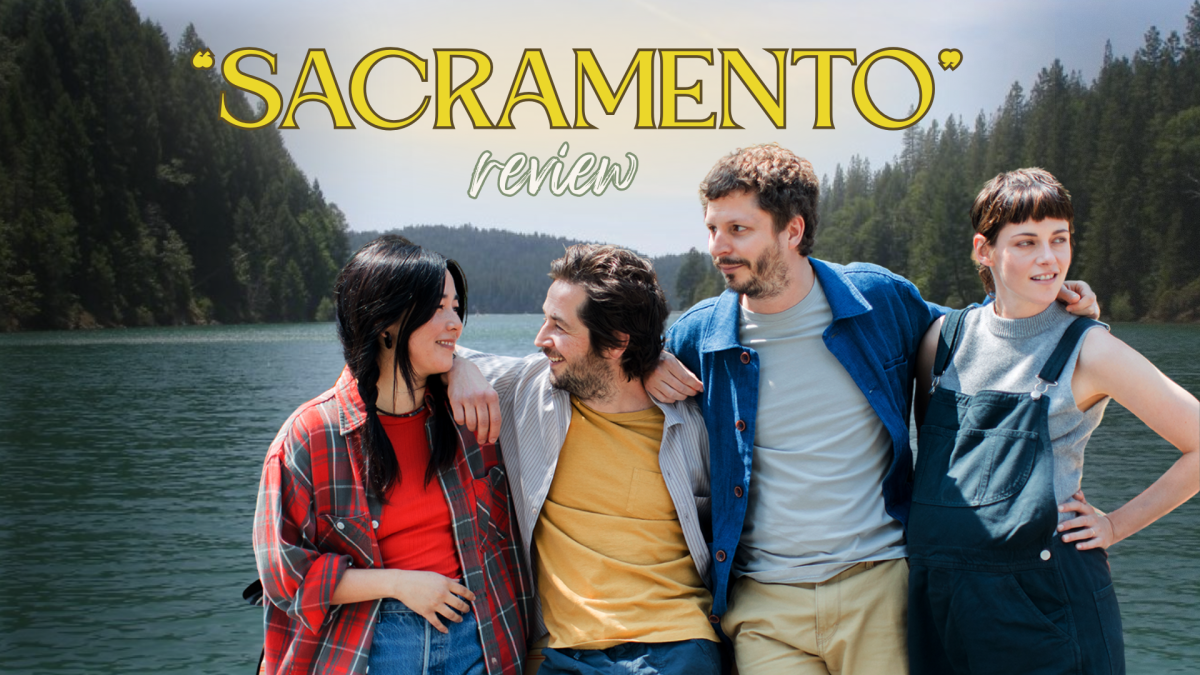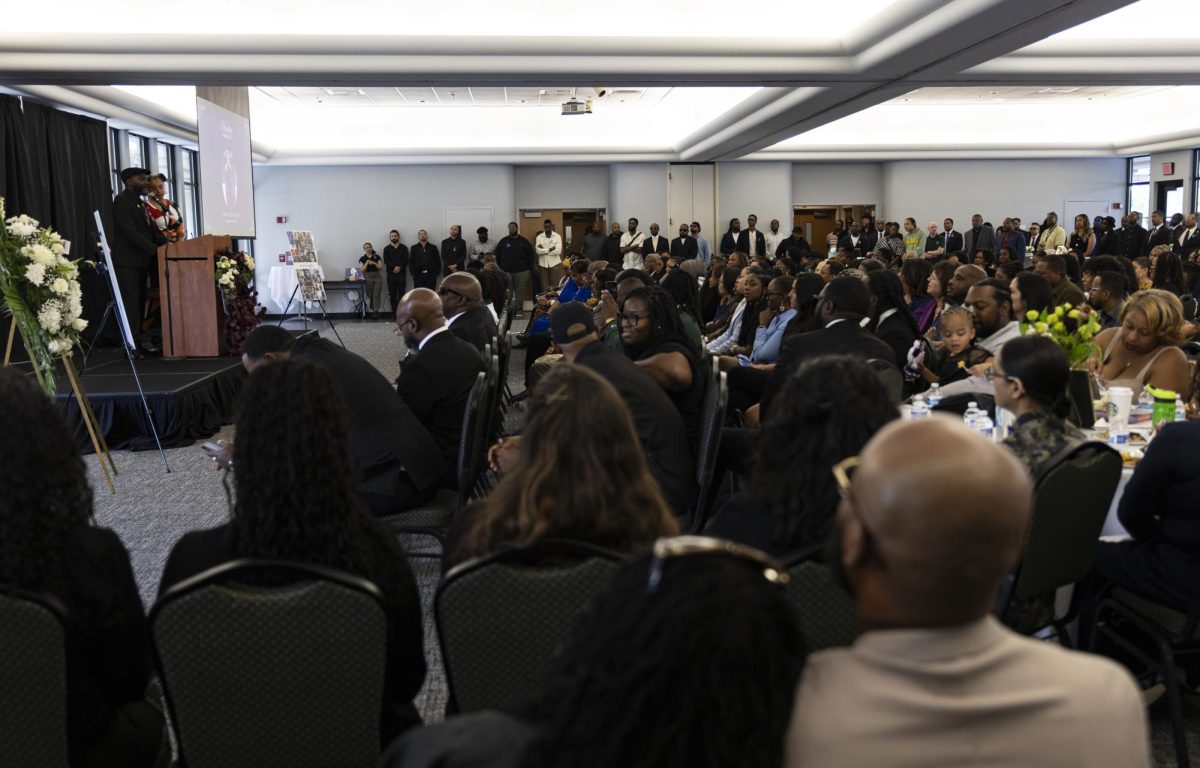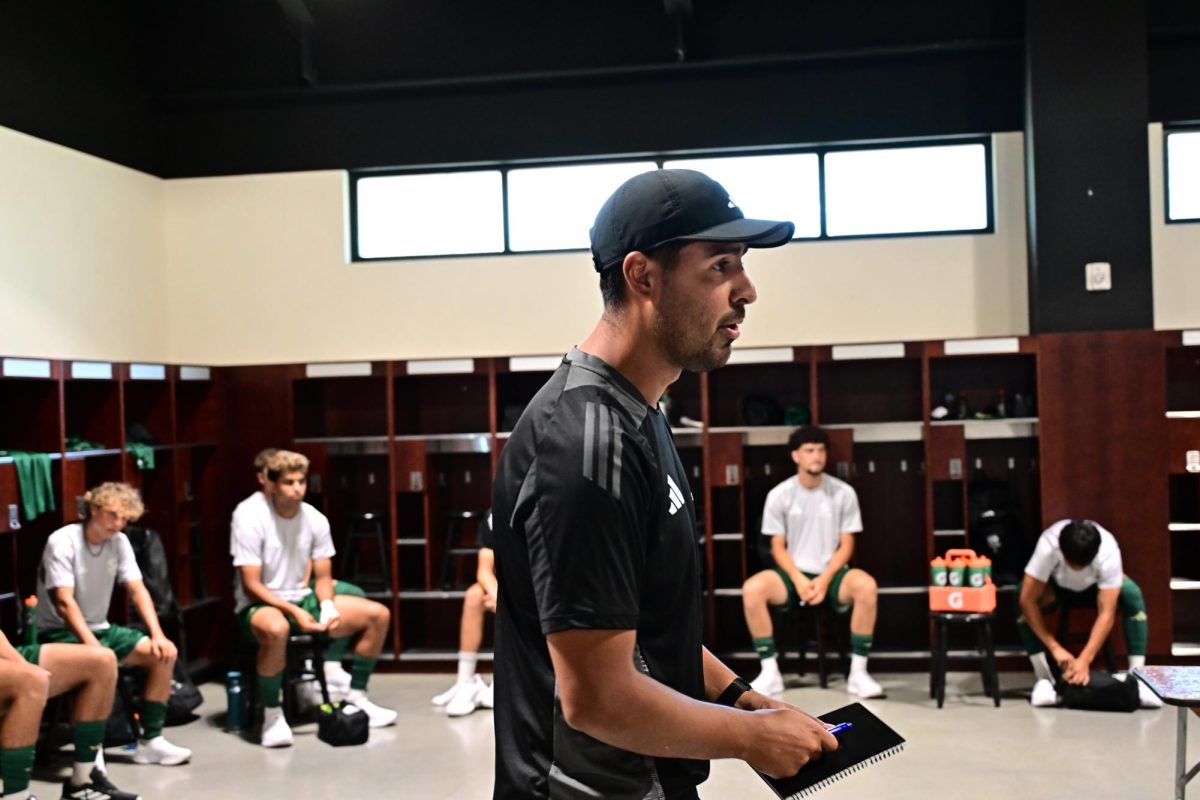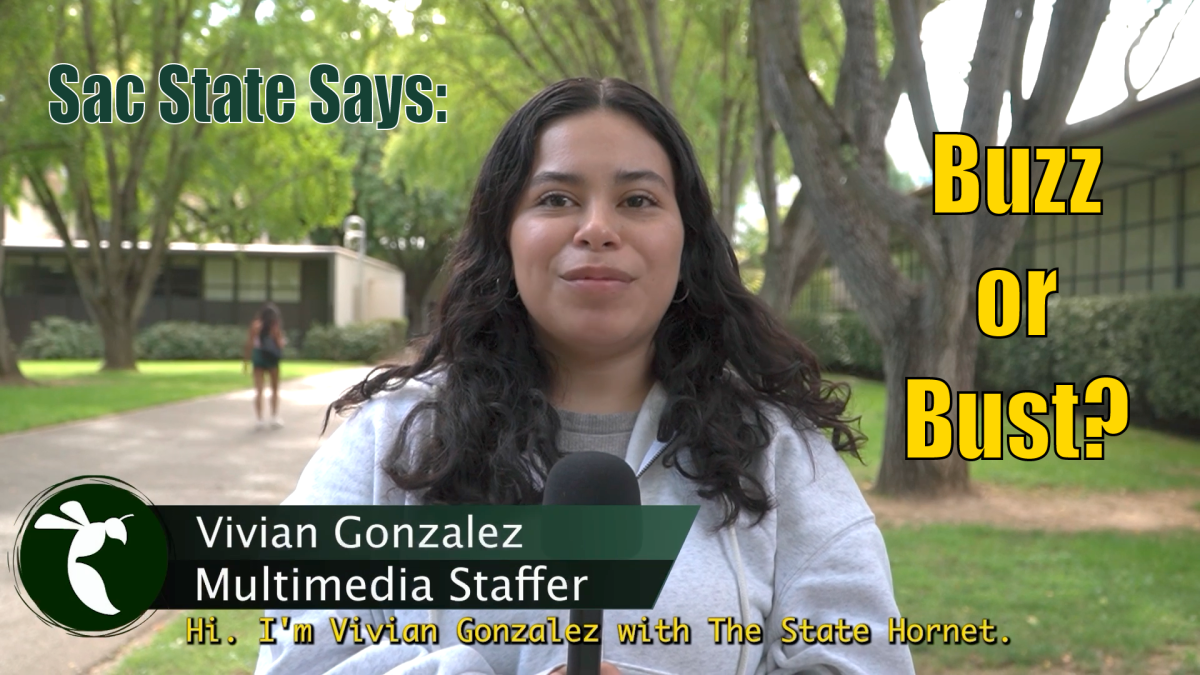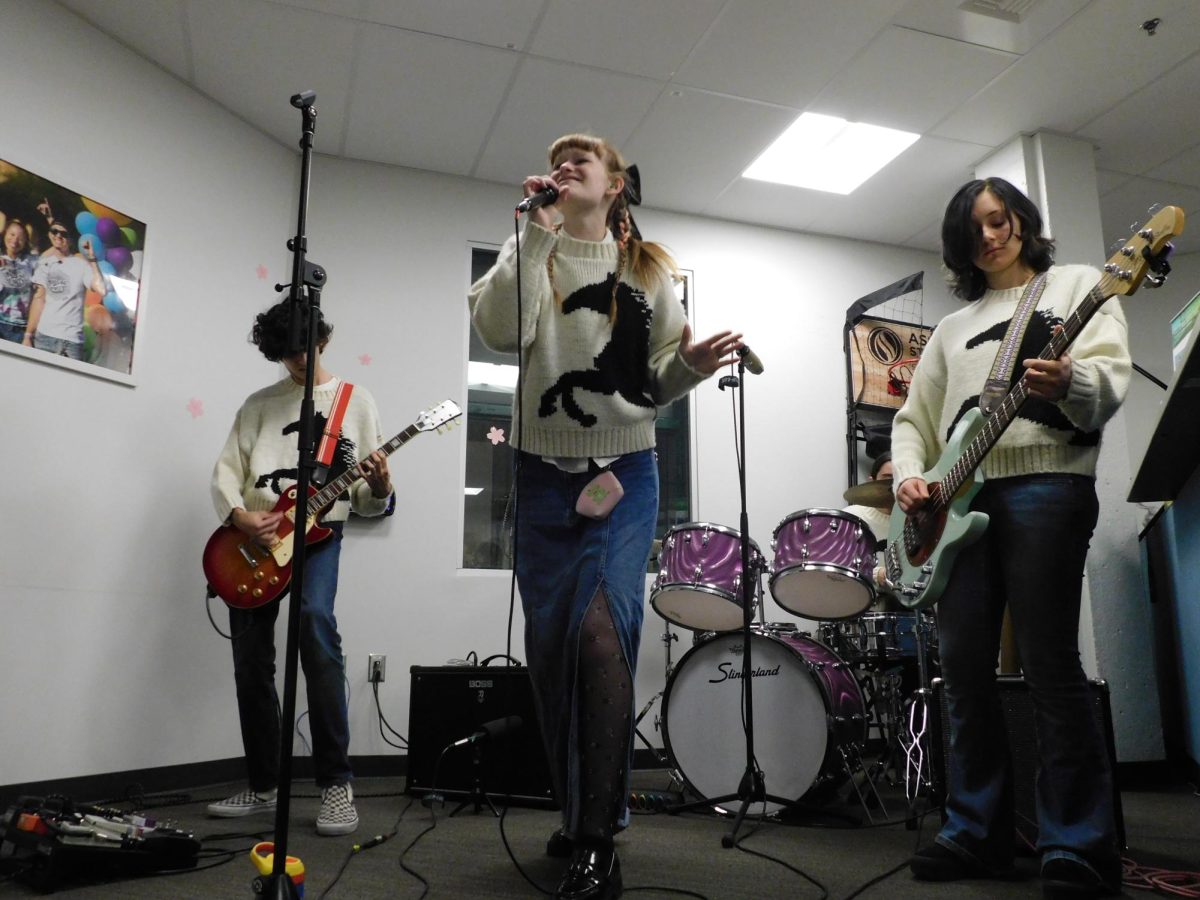Crazy for Capoeira
November 6, 2008
You walk on campus and hear an instrument that resembles the strum of a guitar and shake of a salt holder. When you look to see what is producing the sound, you see that it is not those objects at all, but a long wooden branch with a wire string and a gourd hanging on the end of it. It is a berimbau being played by those who are learning Capoeira.
Capoeira is an art form of dancing and sports mixed together. It is rising in popularity in the United States and on campus at Sacramento State.
Deriving from African roots but evolving in Brazil, Capoeira is a great way for participants to get in shape and become familiar with the movements of their bodies.
It consists of the athletes performing acrobatic movements complete with kicks and arm movements to the sounds of drums and string instruments. Capoeira is often associated with martial arts as it has many similar kicks and arm movements.
Patrick Hilligan who is a part time professor at Sac State, teaches Capoeira as a kinesiology class and also has a studio off campus.
He was one of the first Capoeira participants to begin an academy in the United States. The Capoiera Arts Academy has nearly 80 members and ten of those participants are Sac State students.
Many people do not know about Capoeira but Hilligan insists that once you watch participants perform different movements with an opponent, spectators cannot help but get interested.
“When I was 19 I heard about it from my sister. I went to one of her trainings and I was hooked,” Hilligan said.
Hilligan has been training for 18 years and has received the title of Contre Mestre, which is title only received after many years of training and even a visit to Brazil. He teaches his students both the art form of Capoeira and the cultural history aspect of it.
“It really defies classification; it is a cultural art form which includes acrobatics and fitness all in one,” Hilligan said. “The word ‘sport’ really doesn’t do it justice because you have to play music,” he said.
He hopes that many of his students have fun while they are practicing Capoeira and that they open their minds to learn new things.
The music keeps the students moving and aware of their body, Hilligan said.
“I think the combination of fitness and fun gives off a sense of community. I hope (the students) have a good time and have fun and gain better cultural awareness,” he said.
Melissa Alyxondra Wallace, senior communications major, is a student of Hilligan’s and a member of the Capoeira academy.
She has been practicing Capoeira for a year and said that the music aspect of the activity is what really attracted her to the art form.
Those who practice Capoeira use different instruments such as the berimbau, which is a gourd and wire connected to a wooden branch that produces a sound much like a guitar. The sound hums in your ear and the gourd adds a sound of rice in bowl being shaken to create a beat. Drums are also used along with the pandeiro, which is like the Brazillian tambourine.
“I love music so it was the rhythm that got me. When I first heard the berimbau playing along with the drums, I felt my body moving in a certain way,” Wallace said.
Wallace said that Capoeira is a great way to stay in shape. She said it also is a means for connecting with an art form that is an expression of a foreign culture.
“It teaches you to get used to your body and your movements. There are a lot of acrobatics and you are constantly moving,” Wallace said.
Wallace also said that Capoeira is a fight that uses dance moves.
“It is a dance like a fight and a fight like a dance. The kicks are different than what you see in fighting movies,” Wallace said. “You are taught to be light on your feet as if you are a dancer but at the same time too you are taught to keep your groundwork as a martial artist. It is a combination of both,” she said.
Capoeira consists of high and low kicks as well as arm movements to protect from any kicks that may take place. There is hajonal, which is your upright position of doing your kicks, and angola, which are your ground kicks, Wallace said.
Both Wallace and Hilligan insist that Capoeira can be picked up by anybody willing to learn something new and have fun doing it.
Wallace often practices her berimbau on campus with fellow Capoeira student Brett Chaffins, senior finance major.
Students may see them on campus simply getting a workout or looking to perfect their berimbau skills.
“Once you start it is hard to stop. It has a really deep history. It will become a part of your life and most people integrate it into their everyday (lives),” Chaffins said.
The Capoeira Art Academy is open to any students who wish to open their minds to a new cultural art, said Hilligan.
Vanessa Johnson can be reached at vjohnson2st

































